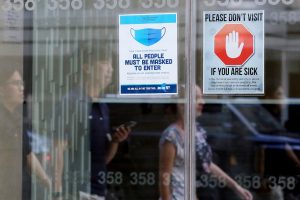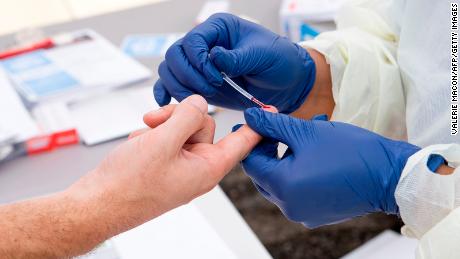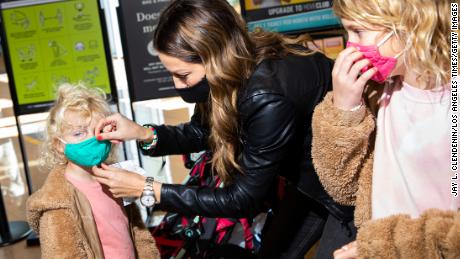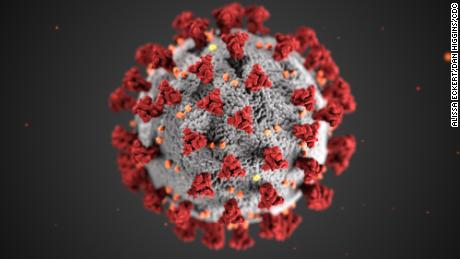Doctor: Covid-19 BA.5 variant is highly transmissible

(CNN)Last week, the US Centers for Disease Control and Prevention announced key changes to its nationwide Covid-19 guidelines. Among them was the end of required quarantine after someone is exposed to a close contact with the coronavirus. The CDC also revised isolation guidance for people infected with Covid-19.
With the required quarantine ending, what should people do if they’ve been exposed? How long should they isolate if they do get infected? What’s the rationale for making the changes? And are there exceptions—who should take precautions above and beyond the new recommendations?
To guide us through the changes, I spoke with CNN Medical Analyst Dr. Leana Wen, an emergency physician and professor of health policy and management at the George Washington University Milken Institute School of Public Health. She is also author of “Lifelines: A Doctor’s Journey in the Fight for Public Health.”
CNN: Has the CDC really ended quarantine? That seems like a major step.
Dr. Leana Wen: It has effectively ended quarantine for people exposed to Covid-19. I agree, this is a major change in recommendations.
The new guidance says that someone exposed to an individual with Covid-19 no longer needs to quarantine at home, away from others. They can go to work, attend school and be in other settings around people as long as they wear a well-fitting, high-quality mask — ideally an N95 or equivalent. People should mask for 10 days following their exposure. They should also test at least five days after the exposure. If it’s positive, they have Covid-19, and they need to go into isolation. If it’s negative, they have to continue masking for the 10-day duration.
CNN: Can you remind us of the difference between quarantine and isolation?
Wen: Quarantine applies to someone who has been in close contact with an individual infected with the coronavirus. Close contact, according to the CDC, means you’ve been within 6 feet of someone with Covid-19 for a total of 15 minutes or more over a 24-hour period. Earlier in the pandemic, the recommendations were that those exposed to Covid-19 had to quarantine themselves from others and not be in public. That’s how someone needing “quarantine” was defined — as someone who has not been diagnosed with Covid-19 but does have a significant exposure.
Now, someone with known exposure no longer needs to quarantine, but they do need to have a period of 10 days of masking.
On the other hand, someone should be in isolation if they have been diagnosed with Covid-19. Isolation is defined as being physically separate from others in order to prevent transmitting the virus during the infectious period.
CNN: Are there still some people who should take additional precautions, despite the guidelines eliminating quarantine?
Wen: Yes. The CDC says that people with exposure should take extra precautions when around people who are more likely to get very sick from Covid-19. What I take this to mean is that you should be additionally cautious if you are, say, visiting an elderly grandparent.
If your spouse has the virus right now and you and your kids don’t, you could still go to work and your children to school with a mask, but consider postponing the trip to see medically frail relatives until after the 10-day period. If you live at home with vulnerable individuals, keep your distance during the 10-day period after your exposure, and make sure everyone is masking indoors around one another.
CNN: What do people need to know now about isolation?
Wen: Here, the new CDC guidance is a bit complex.
The basic premise is that individuals diagnosed with Covid-19, whether they are symptomatic or asymptomatic, need to isolate for at least five days. These initial five days are the period where you are most likely to be contagious. The CDC emphasizes that you should try to stay home and separate from others if possible. Don’t travel, and don’t go to places where you can’t wear a mask, such a restaurant where you will be eating.
If you have no symptoms, or if you have symptoms and they are improving and you remain fever-free for at least 24 hours, you can end isolation after five days. For the next five days, you should still mask while in public places. So you can go to work, but keep masking at work, and make sure to mask while on the train or bus there.
There are some caveats here. First, the CDC guidance says that if you had moderate illness, defined as shortness of breath or difficulty breathing, or if you required hospitalization, or are immunocompromised, you should isolate until day 10. This makes sense, because more serious illness or having a compromised immune system suggests you could have had a higher viral load that takes more time to clear.
Second, CDC once again emphasizes caution around people who are likely to get very ill from Covid-19. If you just had Covid-19, you should wait at least until after day 10 to visit medically frail family or friends. I would add here, too, that you should test negative by rapid antigen test prior to seeing vulnerable individuals indoors. This is not something the CDC recommends, but I think the negative test adds more reassurance to protect those at high risk.
Third, speaking of testing, the new guidance also says that you could end your 10 days of masking early if you take two rapid tests 48 hours apart. Let’s say that by day five, your rapid test is negative. You could take another test on day seven, and if it’s negative, no longer need to mask after that.
I think this is sensible, and actually wish the CDC would be even more explicit with its recommendation to clear isolation based on testing. There are some individuals who will still be testing positive on day 11. Here I am referring only to the home rapid antigen test, as the PCR test could remain positive for much longer. I think it would be even safer to say that you need to be testing negative before being around vulnerable individuals, even if it’s been, say, 12 or 13 days.
CNN: What about people who start testing positive again after first testing negative — the so-called “rebound” phenomenon? Does the clock reset for them?
Wen: Good question, and yes it does. This “rebound” phenomenon is often associated with taking the antiviral Paxlovid but could happen in people who don’t take treatments. The CDC guidance says that if someone tests positive again, the clock resets and the day they test positive the second time is day zero again. That means they still have to go through five days of isolation and mask until after day 10, just as they did the first time.
CNN: Why were these changes made? Did the science change, or is the CDC responding to public pressure?
Wen: I think there are two factors. One is the acknowledgment that Covid-19 is here to stay. We are probably going to be living with this virus for our lifetimes and our children’s lifetimes and beyond. Given that’s the case, the emphasis has to be to resume normalcy, which means cutting out policies that are disruptive to everyday life.
The other factor is that public health has to respond to where the public is. Most Americans have returned to many aspects of pre-pandemic life. The CDC guidelines seem to be meeting people where they are already — and, to some, not going far enough — for example, they still recommend masking in high-transmission areas even though most people are not doing so. For public health to be trusted, it has to be seen as relevant, and if the guidance from the CDC is too far apart from people’s everyday behavior, it won’t be trusted.
Implicit here is that there isn’t new research that’s leading to the change. Quarantine isn’t being removed because Covid-19 has become less infectious. However, circumstances have changed, including the fact that we have many more tools that reduce the likelihood of severe illness from the coronavirus.
All in all, I think the CDC made the right call. Easing restrictions now preserves the credibility of public health officials later, if stricter guidance has to be in place because of a new, more dangerous variant.
Source: Read Full Article






